What defines a struggling reader?
When you think about teaching struggling readers, most often it is associated with students who can’t sound out words or have difficulty understanding the word they are reading. Reading skills are broad and can be one of the most difficult things to teach. Especially, if you get a student in middle school who still hasn’t mastered the basics of reading, like phonemic awareness. Reading strategies are vast and which ones work for which type of struggling readers? What exactly is a struggling reader?
According to Phonicbooks, “a struggling reader is a child who experiences difficulty learning to read. This maybe due to: speech and language problems, specific learning difficulties, English as a second language acquired at a later age, poor reading instruction when they were learning to read or a combination of the above. Many struggling readers are also reluctant readers because they find it difficult, fear failure and are aware that they are falling behind their peers. Many of these pupils experience low self esteem.”
The Brain and Reading Skills
In Building the Reading Brain, Wolfe and Nevills (2004) describe the brain as a hierarchy of low-level decoding skills and high-level comprehension-making skills. They write that at “the higher levels are the neural systems that process semantics (the meaning of language), syntax (organizing words into comprehensible sentences), and discourse (writing and speaking). Underlying these abilities are the lower-level phonological skills (decoding) dedicated to deciphering the reading code” (p. 26). All of these systems must function well in order for individuals to read quickly and make meaning from the text.
In an article written by Houghton Mifflin Harcourt they discuss the following related to the patterns of a reading brain versus the brain of a struggling reader. While reading as a process is consistent, no two brains look exactly the same during reading. However, the patterns that emerge when we study the brains of strong readers tell us that reading and language are in a reciprocal relationship. This is illustrated in the image below.

My personal experience with reading strategies and my students.
Middle school reading teachers are often not equipped with the necessary skills to handle these types of reading difficulties. They can feel lost and defeated before they even attempt to solve the problem. What if I told you that I have experienced this very issue.
As a former 5th grade Reading teacher, I found myself in this very situation. As a second year very green, teacher, I found myself completely overwhelmed by this new found problem. Even my tenured mentor had no advice for me, as she had never experienced a deficit this drastic. I found myself asking what reading strategies was I suppose to use? And, how was I suppose to actually teach these skills without treating this child like a kindergartener?
Overwhelmed doesn’t begin to describe it!
A student that had been homeschooled his whole life was entering public school for the first time and was enrolled in my 5th grade Reading class. No disrespect to “true homeschoolers,” but this child had NOT been homeschooled. He tested on a pre-primer reading level. If you don’t know what that means, he was lower than a kindergarten reading level. I was flabbergasted and totally panicked! How do I teach this student? In addition to this situation, I had more than 20% of the grade level on interventions that year. I wanted to quit!
In addition to this students I had a group of students where roughly 35% of them were reading 1-2 years below grade level. This was a huge number of students that weren’t ready for 5th grade. How was I going to get these students where they needed to be before the end of the year (by state testing time)?
Immediately I turned to research, took professional development classes on Reading strategies, and found myself just as lost at the end of the journey. I decided to just jump in and try some things. Ultimately, I implemented 5 key Reading strategies of my own that were game changers that year. These 5 strategies left me ending the year with record test scores, produced by these very same struggling students. YES, a second year teacher with a less than ideal group of students ending that year getting recognized by the superintendent!
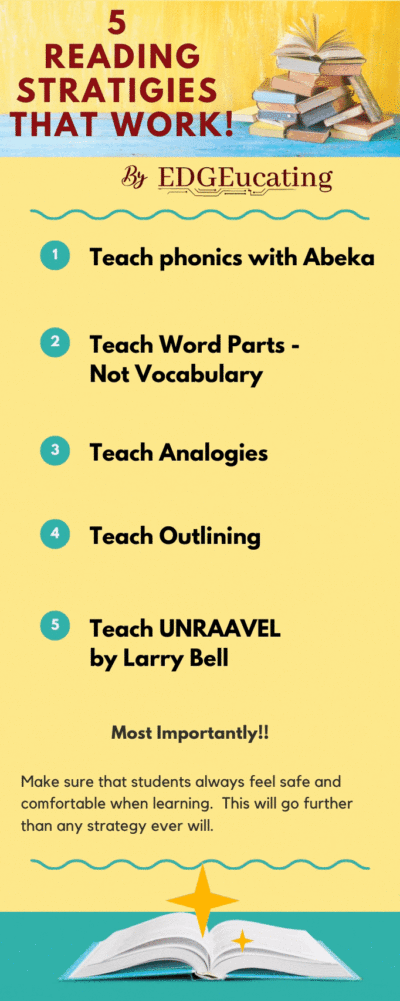
5 Reading Strategies That Work!
What were the 5 Reading strategies, you ask? Well, they are much simpler than you might think.
- A Beka Phonics System
- Teach word parts (Greek and Latin roots), not vocabulary
- Analogies
- Outlining
- UNRAAVEL by Larry Bell
Is that all? Yep, that was my master plan and it worked! I took reading back to the basics by asking myself what skills I felt really helped me in school and slowly perfecting those skills and ways to teach them. These very strategies are all backed up by research and widely used in various ways. Check out this article from Edutopia about supporting struggling readers. The problem I found was nothing translated to “how to” for me as a teacher. That’s why I found my own “how to.”
How I implemented these reading strategies.
#1 Teaching Phonics
Teaching phonics was definitely where I had to start with the student who couldn’t even recognize all of his letters. I used the A Beka Phonics handbook and worked with him for 20-30 minutes every day. He would recite the phonics charts and work through this handbook with my title assistant. In addition, I made him participate in the book reports and outlining projects I’m going to discuss in a moment.
Additionally, I used parts of the phonics handbook with two of my special education students that were struggling with some of their blend sounds. Hand picking the parts of the book that they needed was crucial to staying within my targeted 20-30 minute session time constraints. However, I only met with them 3 times per week.
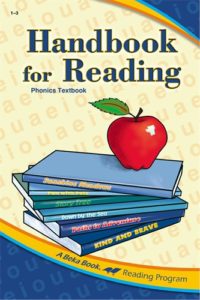
#2 Teaching Word Parts
The second strategy that I implemented was done with ALL of my students. Rather than having students memorize vocabulary words, like most teachers do, I had them learn word parts. Teaching Greek and Latin roots has been proven to build vocabulary, improve spelling, and build confident readers and writers. Teaching Greek and Latin roots is a time tested and proven strategy in Reading, so much so that most teachers implement them in some fashion. The problem is that it is done sporadically and not in a consistent and intentional way. I did just that. It became my only method of teaching vocabulary.
Introducing this with a dramatic lesson, to get the students’ interest, was critical. Choosing the longest word in the dictionary, I wrote it on the board. I didn’t have anything else written on the board that day. To start class, I asked the students to tell me what that word meant. They all looked super panicked! I asked them to tell me how we could figure out what it meant without using a dictionary. They were still at a loss for words.
After this dramatic act, I began to segment the word into word parts and tell them what each part meant. After segmenting the entire word this way, I asked them again to tell me what they thought the word meant. This time around I had students all fighting to give me responses. This got them hooked on word parts.
After that I used the book, Mastering Vocabulary from Teacher Created Resources to teach them word parts each week. We would use the tests inside this book. The tests use word parts to create words the students have not seen before and they must figure out it’s meaning using their knowledge of the word parts. At first, students did not do well on the tests. I almost stopped doing this. Suddenly, it all clicked and I began to see massive progress in all of my students. Students were reading better, with more confidence, and with more understanding. I was even complemented by my tenured mentor, who taught math, on how much better the students were doing in her class with things like word problems. Excited wasn’t enough to describe how I felt! I have been a believer ever since and have seen success year after year using this strategy.
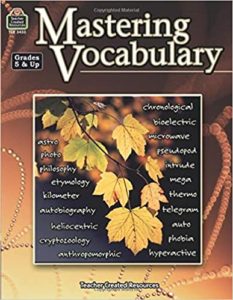
#3 Teaching Analogies
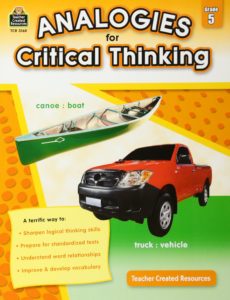

Next, I started seeking a way to help the students with inference skills and making connections to what they were reading. This was key to improving their comprehension skills. I started looking into critical thinking skills. I have always been a believer in the concept of “teach them to think and they can learn anything.” In looking into what was recommended for critical thinking in reading, I continually came across the mention of analogies. Analogies also happened to be one of my required skills to teach in 5th grade. This seemed like a no brainer to me, so I tried it. We began routinely completing analogies and it worked! I utilized two books regularly for teaching analogies. Those books were Analogies for Critical Thinking and Unlocking Analogies. (I linked to the grade levels that I used but you will notice that the entire series is available on our site.)
Developing Critical Thinking through Literature Reading focuses on the research that shows in order for students to function well within society, evaluate the validity of information available, make better personal, business or leadership decisions, developing critical thinking skills are essential. I found the same to be true in my reading class with my students. No only did their reading skills improve but their showed an overall academic improvement. Students showed even more comprehension growth with this incorporation. Understanding relationships naturally improved their reading comprehension and boosted their inferential (deductive) thinking skills. It caused them to begin to critically think about what they were reading and question more. This resulted in deeper understanding and comprehension.
#4 Teaching Outlining
This next reading strategy was the toughest of all! I decided that the best way to teach comprehension, main idea, supporting details, and help students pass reading tests was to teach them to outline. How, you ask? Well, I used two key things to accomplish this. One was a Remedia Publications book titled Outlining Made Simple. This book walks students through the parts of an outline and how to outline, step by step. It made my job very easy. We outlined a 3rd grade level reading book together in class. I wanted the focus to be on the outlining and not the difficulty of reading the book.
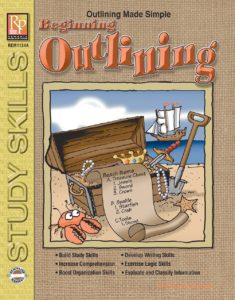
The second step of teaching outlining was the hard part. I had students complete and present a book report every grading period. They chose a book on their reading level, so it was differentiated and doable for every child. Then I gave them an outline style book report to follow. They had to basically fill out the outline with the content from their book. This was no easy task for these struggling students. However, by the end of the year they ALL had mastered outlining and reading. I gave them time once a week to ask me questions related to their book reports. I also enlisted the help of our wonderful librarian. The librarian gave them time in the library to work on their reports and helped guide them along the way as well.
#5 Teach the UNRAAVEL Strategy
The last reading strategy was teaching students to read with a purpose and plan by using Larry Bell’s strategy called UNRAAVEL. This taught my struggling readers and my high ability readers alike to read with a purpose and to pay attention. We all know that high ability learners often tend to assume things. They rush and assume they know the answer without even reading the entire question. This method required them to document and really pay attention to what they were reading and where they found the answer.
I used the Paired Passages workbook to teach these skills and help students compare and contrast at the same time. This also forced students to pay closer attention to detail by having to compare and contrast the two passages.
Of all the 5 reading strategies that I implemented, this one was the most difficult to get the students to do. I actually had to implement taking points off if the students didn’t use this strategy, much like a math teacher does with not showing work. Parents and administrators alike fought me on this, initially. Once the students began using this strategy routinely, they loved it. Change is never easy!

Making students feel comfortable is a vital reading strategy that build confidence!
Something that seems obvious but is nonetheless necessary for me to say is, be sure that students always feel safe and comfortable when learning. This will go further than any strategy ever will. As a Reading teacher, I quickly learned that most of my struggling readers had been given a complex by other teachers. I don’t think this was something that was intentional or was even something that those teachers were aware they had done. Having students receive assignments that others could clearly see were different, made them feel ashamed. Well, how do I teach them where they are (differentiate) and not give different assignments, you may be asking. I have the answer! I have explained what I did with the book reports. Having students choose a book on their own level was the difference. The remainder of the assignment was identical to what the rest of the class was doing. This made those students feel like they were part of the class and not different. I also found that it made them try harder.
Differentiate without making them feel different!

Another way that I built there confidence was by using a book from Teacher Created Resources titled Differentiated Nonfiction Reading. (Again, this book is available for multiple grade levels and they are all available on our products page) This book allowed me to teach the same grade-level content to students with varying reading abilities while keeping the look of the assignment the same. Students could not tell who was getting what reading level, or that they were different at all. The same information is written at three different levels: below grade level, at grade level, and above grade level. All the students were able to read the passage and have the information necessary to respond to the same six questions that evaluated their comprehension of the subject matter. This book was amazing!
Making my students feel comfortable and confident made them work twice as hard for me and themselves. I realize that this isn’t a reading strategy but it is critical if you want to help students become skilled readers. Without confidence they will never reach this goal despite any reading strategies that you teach them.
Make no mistake, I was known by parents and students alike as the tough teacher but it paid off. Students came back to me years later and told me how grateful they were that we learned outlining and how much my Reading class helped them.
What the results showed after of a year of implementing my 5 reading strategies.

By the end of year my pre-primer student tested on a 3rd grade reading level. Yes, he gained 4 years in his reading level that year. The rest of my students all test at or well above grade level, with the exception of two of my special education students. These two students had true learning disorders but still gained significant growth on their state tests in reading and writing that year. I was so proud of them and myself! Many of my students were recognized by the district that year for outstanding performance on their state test and the superintendent personally came and congratulated me on their successful results.
What other products did I use?
I feel that quality products are just as important as the reading strategies that you use. If you are looking for quality teaching resources that I have vetted and that are proven to work, I encourage you to check out our products page. After all, I am all about working smarter and not harder! Here are a few more of my go to reading resources from my time as a Reading teacher. Our products page includes various grade level versions of the titles, in case you don’t teach 5th grade.
Products Used: ( I am linking to the 5th grade version of these books but many of them are available on our site for various grade levels.)
Paired Passages: Linking Fact to Fiction
Building Words: Using Root Words, Prefixes, And Suffixes
Strategies that Work: Comprehension Practice
Educational Insights Hot Dots Academic Vocabulary Card Sets- Grades 4-6
Reading is a multifaceted process that develops only with practice. According to k12reader.com, there are certain aspects of reading, such as fluency and word recognition, which can be learned in a few years. These basics must be mastered but at the same time reading comprehension should be emphasized in the process. Students can parrot words on a page all day long but if they don’t have the necessary comprehension skills they will not be able to make predictions about what will happen next, monitor their understanding of content, sequence or characters, clarify confusing parts of the text, or connect what they’re reading to their own experience or prior knowledge. And that is what true comprehension is all about.
This is why my strategies incorporate all of these mentioned areas. One cannot be truly successful without the other. These skills are all very interdependent. I truly believe that this is why my 5 strategies work so well, because all of the essential areas were equally weighted and implemented. In addition, meeting students where they are while building their confidence added the extra social and emotional boosts necessary for a successful recipe!
Talk to us!
I would love to hear from you regarding products you use in your classroom that you and your students love. Please drop me a line and let me know what they are. Also, give me your feedback related to these strategies and products that I have covered in this article. Which is your favorite? Let me know in the comments.
Thanks for your continued support. Don’t forget to to subscribe to our newsletter so that you get our email notifications about new products and topics that will help keep you on the cutting EDGE of education!
Happy teaching!



